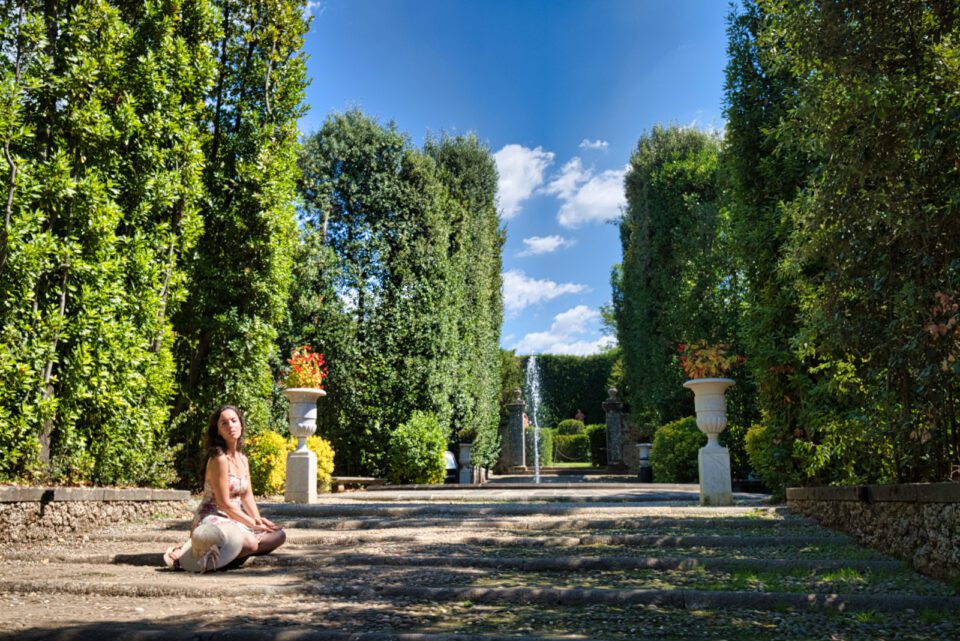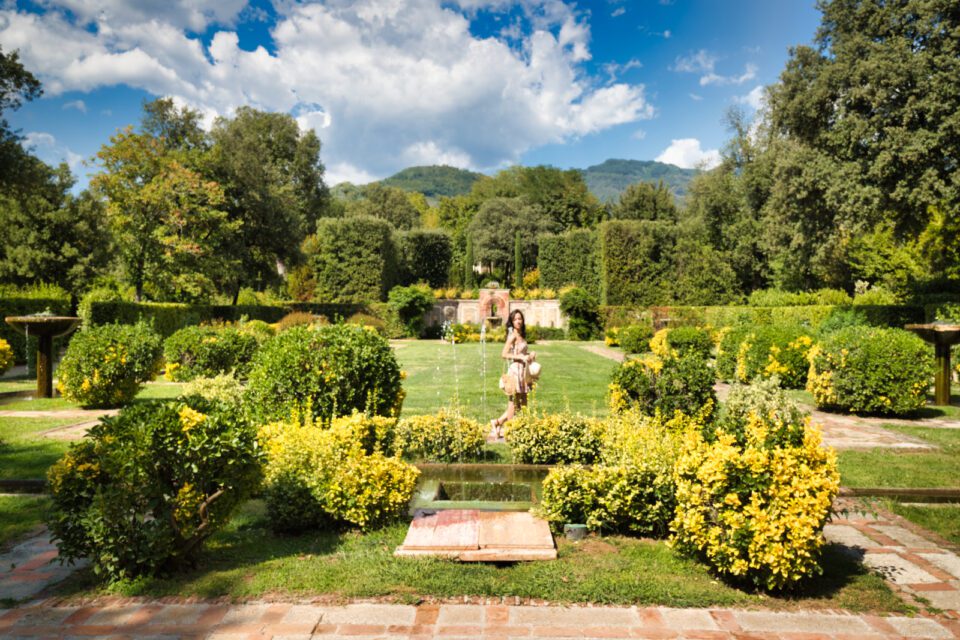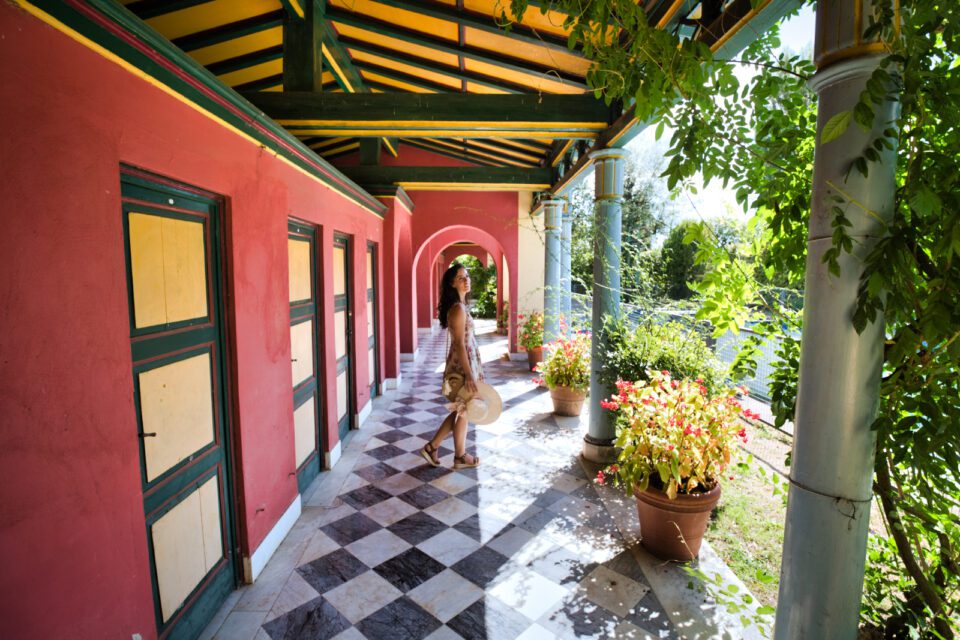Tuscany is one of those regions where beauty is everywhere! It could be the pristine coasts of Isola d’Elba or the golden hills of Val d’Orcia. And if you are passionate about history how not to mention Florence and Pisa? However, today I’m going to talk to you about Tuscany’s best kept secret: Villa Reale di Marlia. A magnificent Villa from the 17th century that has one of the most beautiful gardens in Italy.
How to arrive to Villa Reale di Marlia
The easiest way to reach Villa Reale is by car. Note that in general, it’s easier to tour Tuscany by renting a car, you can reach some of the smallest (and cutest!) villages only by car, bike or motorbike.
If you are coming from highway A1, you can exit at Lucca East. Follow the directions for Abetone (for about 6 km), and then the indications for Matraia and Villa Reale. You can park your car right outside the park near the ticket office and the Villa’s gates.

Best time to visit
Spring and summer are undoubtedly the best time to visit the Villa. The trees are greener, the beautiful rose bushes blooms and camellia flowers cover the garden alleys.
Prepare for your visit by checking the Villa opening time and ticket prices on their website.
Some history of Villa Reale di Marlia
The Villa was originally a fort in the 16th century. Although it achieved a baroque aspect following restorations in the second half of the 17th century. At that time the new owners, the noblemen Olivieri and Lelio Orsetti built the Clock Tower and created the Green Garden and the Lemon Garden.
In 1806, Elisa Bonaparte Baciocchi, Napoleon Bonaparte’s sister, acquired the Villa and shaped it to her taste. The interiors were decorated in empire style. While the Villa’s exterior facade changed into a neoclassical style.
During this period, the Villa’s front garden changed to its final aspect we still can see today. In line with the time’s fashion, a long downward slope took place in front of the Villa. Landscape designers of the Romantic era favored a more natural style in opposition to the symmetrical gardens of the previous times. As a result of this redesign new species were introduced to the park, such as the varieties of Camellia Japonica.


Following the fall of Napoleon, the Villa had many different owners, that gradually neglected it. Until, in 1923, Counts Pecci-Blunt bought the property. The following year, they entrusted the French architect Jacques Greber to return Villa Reale di Marlia to its former splendor.
One of the most important additions from this period is the beautiful Swimming Pool, in art deco style. Additionally to the swimming pool and the sports area, Jacques Greber created the Lake and planted the weeping willows.
After the death of the Counts, the Villa fell into oblivion for years. Until 2015, when Henric and Marina Grönberg discovered the estate and fell in love with it. Since then, major restoration works allowed to open the Villa for the first time to the public in 2021.
9 Reasons why you will LOVE the Villa
1. The Villa Reale di Marlia
Giving the name to the property, Villa Reale is one of the oldest and most majestic villas in Tuscany. The apartments have been set up according to the Napoleonic style. Two out of the three floors are open to the public today, including a terrace that shows a beautiful view of the Water Theatre.
Note that it’s forbidden to take pictures inside the Villa.

2. The Water Theatre
Honoring its name, the water theatre is a majestic exedra, complete with fountains and water jets. The Water Theatre features sculptures of Greek gods and animals. Adding more beauty to this architectural element, rose bushes and other flowers complete the scenery.

3. The Clock House
The Clock House is a building from the 17th century. Today it hosts a small exhibition of folklore costumes from all around the world, and also a library with ancient books and documents, from the 17th century until 1950 approximately.
In the left wing, a room showcases miniature reproduction of the Villa’s main building.

4. The Green Theatre
Surrounded by a small labyrinth of shadowed alleys, the Green Theatre is absolutely surprising. Enclosed in yew hedges this natural theatre is the oldest in Europe.
Famous artists like violinist Niccolò Paganini and playwright Jean Racine performed here.
After the recent reopening, it occasionally hosts new events. If you are interested in attending one of the events, check the Villa’s website.

5. The Lemon Garden
A large rectangular body of water is surrounded by over 200 citrus plants. Welcome to the Lemon Garden!
This beautiful example of baroque architecture ends in the majestic fountain of the Three Graces. The fountain has a fish pond surrounded by tuff that makes its surface irregular.

6. Spanish Garden
Also known as the flower garden, the Spanish Garden has artificial streams that run through it and create a geometrical pattern on the ground.
In addition to the water streams, there are plenty of bushes of flowers that bloom from Spring to Summer, coloring the green garden in white, rose, and red.

7. Pan’s Grotto
Pan’s Grotto is one of the oldest buildings on the property. In fact, it belonged originally to the Bishop’s Villa and it dates back to 1570-1580.
As its name indicates, the interior of this structure reminds that of a grotto, just like the ones in Villa d’Este. The walls are covered with tuff and limestone formations, creating an irregular surface.

8. Swimming Pool
The garden of the Villa has a large sports area complete with a tennis court, a boules court, and a croquet lawn.
But above all the Swimming Pool!
Unlike other buildings, this beautiful structure is in art deco style. Designer Jacques Greber built it in 1928, and even though it was not restored yet, the place still has an undeniable charm of past times.

9. The Lake
One of the last additions to the landscape was the idyllic lake at the end of the downward slope. Framed by weeping willows, this is undoubtedly one of the most romantic locations inside the Villa. The lake isn’t only a decorative element, it also has a practical function: during summer it provides water for the garden.
You can simply sit on the border of the lake to read a book or contemplate the lush surrounding nature.

Visit one of Tuscany’s hidden gems
Tuscany in general, and the area nearby Lucca in particular, hide some of the most beautiful Villas in Italy, and Villa Reale di Marlia is definitely one of them! If you are planning a visit to Lucca, don’t hesitate to add this hidden gem to your list.
Have I convinced you? Then pin this to your Italian bucket list for later!
Are you planning a trip to Tuscany? Find more Tuscany’s ideas.



